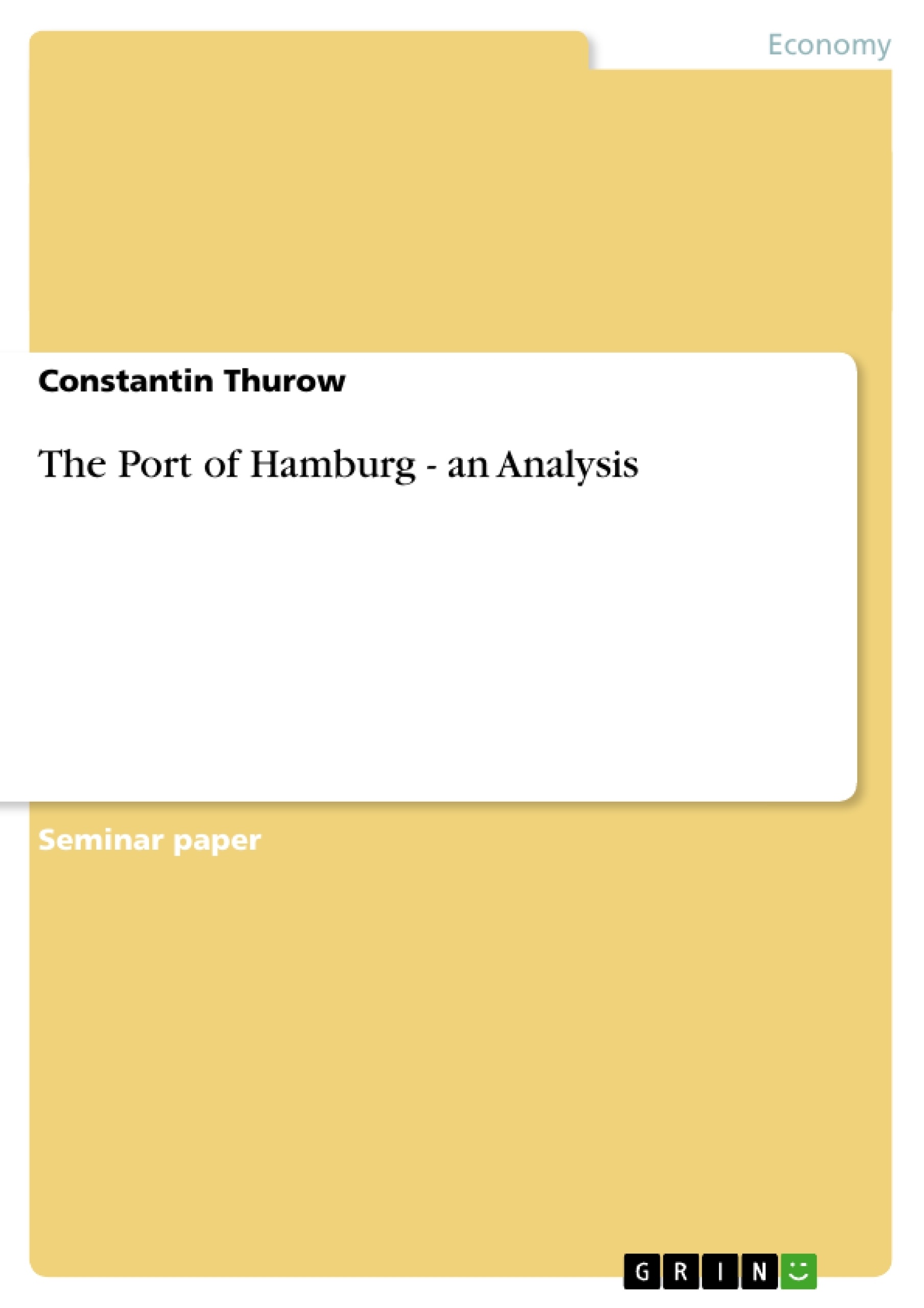The Port of Hamburg is one of the biggest ports in the world and has great influence on the development of the economy in Germany. For these reasons it is called “Germany’s Gateway to the World”. This report analyses the economic perspectives of the Port of Hamburg. In the first section, background information regarding the history of the port and important facts on the current stage of development of the port are given. In the second part, a SWOT analysis is conducted pointing out the strengths, weaknesses, opportunities and threats of the port. Based on the analysis, recommendations for the future strategy of the Port of Hamburg are developed and presented in the last section. Finally, the results of this report are summarised in the conclusion.
Table of Contents
- 1 Background of the Port of Hamburg
- 1.1 The History
- 1.2 The Port of Hamburg Today
- 2 SWOT-Analysis
- 2.1 Strengths
- 2.2 Weaknesses
Objectives and Key Themes
This report analyzes the economic perspectives of the Port of Hamburg. The main objective is to assess the port's current standing and provide recommendations for its future strategy. This is achieved through an examination of the port's history, a SWOT analysis, and the development of strategic recommendations.
- Historical development of the Port of Hamburg
- Strengths and weaknesses of the Port of Hamburg's current position
- Opportunities and threats facing the Port of Hamburg
- Strategic recommendations for the future of the Port of Hamburg
- The Port of Hamburg's role in the German economy
Chapter Summaries
1 Background of the Port of Hamburg: This chapter provides a comprehensive overview of the Port of Hamburg, starting with its rich history dating back to 825 AD. It traces the port's evolution, highlighting key milestones such as its inclusion in the Hanseatic League, the impact of the discovery of America, periods of growth and setbacks due to war, and its eventual reconstruction and modernization. The chapter also details the port's current status as one of the world's largest container ports, its operational structure, and its significant contribution to the Hamburg and German economies, emphasizing its role as "Germany's Gateway to the World". The section on the present-day port underscores the importance of its infrastructure, including its sophisticated software systems and the key players involved in its operations. The chapter establishes the foundation for understanding the Port of Hamburg’s current position within the global maritime landscape and its integral role in the German economy.
2 SWOT-Analysis: This chapter conducts a SWOT analysis of the Port of Hamburg, examining its strengths, weaknesses, opportunities, and threats. The strengths discussed include its strategically advantageous location, efficient infrastructure, advanced technology, strong security measures, high local demand, and positive public image. The analysis contrasts these strengths with weaknesses such as its inland location which impacts accessibility for large cargo carriers and the consequent need for coordination of incoming and outgoing ships. The chapter lays the groundwork for the strategic recommendations provided in subsequent sections. It highlights the complex interplay of positive and negative factors influencing the Port of Hamburg’s long-term success and sustainability within a dynamic global market.
Keywords
Port of Hamburg, maritime logistics, SWOT analysis, economic development, containerized cargo, Germany, history, infrastructure, strategy, competitiveness, global trade.
Frequently Asked Questions: Port of Hamburg Report
What is the overall focus of this report?
This report comprehensively analyzes the economic perspectives of the Port of Hamburg, assessing its current standing and providing recommendations for its future strategy. It achieves this through examining the port's history, conducting a SWOT analysis, and developing strategic recommendations.
What topics are covered in the report's table of contents?
The report covers the background of the Port of Hamburg (including its history and current status), a SWOT analysis of the port, and strategic recommendations for its future. Specific subtopics include the port's history, its current infrastructure and operations, its strengths and weaknesses, opportunities and threats it faces, and its role in the German economy.
What are the key themes explored in the report?
Key themes include the historical development of the Port of Hamburg, its current strengths and weaknesses, opportunities and threats it faces, strategic recommendations for its future, and its crucial role within the German economy. The report emphasizes the port's position as "Germany's Gateway to the World".
What does the chapter on the background of the Port of Hamburg cover?
This chapter offers a detailed overview of the Port of Hamburg, tracing its history from 825 AD to its current standing as a major global container port. It highlights key milestones, its operational structure, and its economic contribution to Hamburg and Germany. The chapter emphasizes the port's infrastructure, software systems, and key players involved in its operations, setting the stage for understanding its current global position.
What does the SWOT analysis chapter entail?
The SWOT analysis chapter examines the strengths, weaknesses, opportunities, and threats facing the Port of Hamburg. Strengths include its location, infrastructure, technology, security, local demand, and public image. Weaknesses include its inland location impacting accessibility and the need for efficient coordination of shipping. This analysis lays the foundation for strategic recommendations.
What kind of strategic recommendations are likely included (based on the preview)?
While the specific recommendations aren't detailed in this preview, the report will likely provide strategic suggestions based on the SWOT analysis to ensure the Port of Hamburg's continued success and sustainability in the global market. These may address challenges related to accessibility, competition, and future economic trends.
What are the keywords associated with this report?
Key terms associated with this report include: Port of Hamburg, maritime logistics, SWOT analysis, economic development, containerized cargo, Germany, history, infrastructure, strategy, competitiveness, and global trade.
- Quote paper
- Constantin Thurow (Author), 2008, The Port of Hamburg - an Analysis, Munich, GRIN Verlag, https://www.grin.com/document/176510




